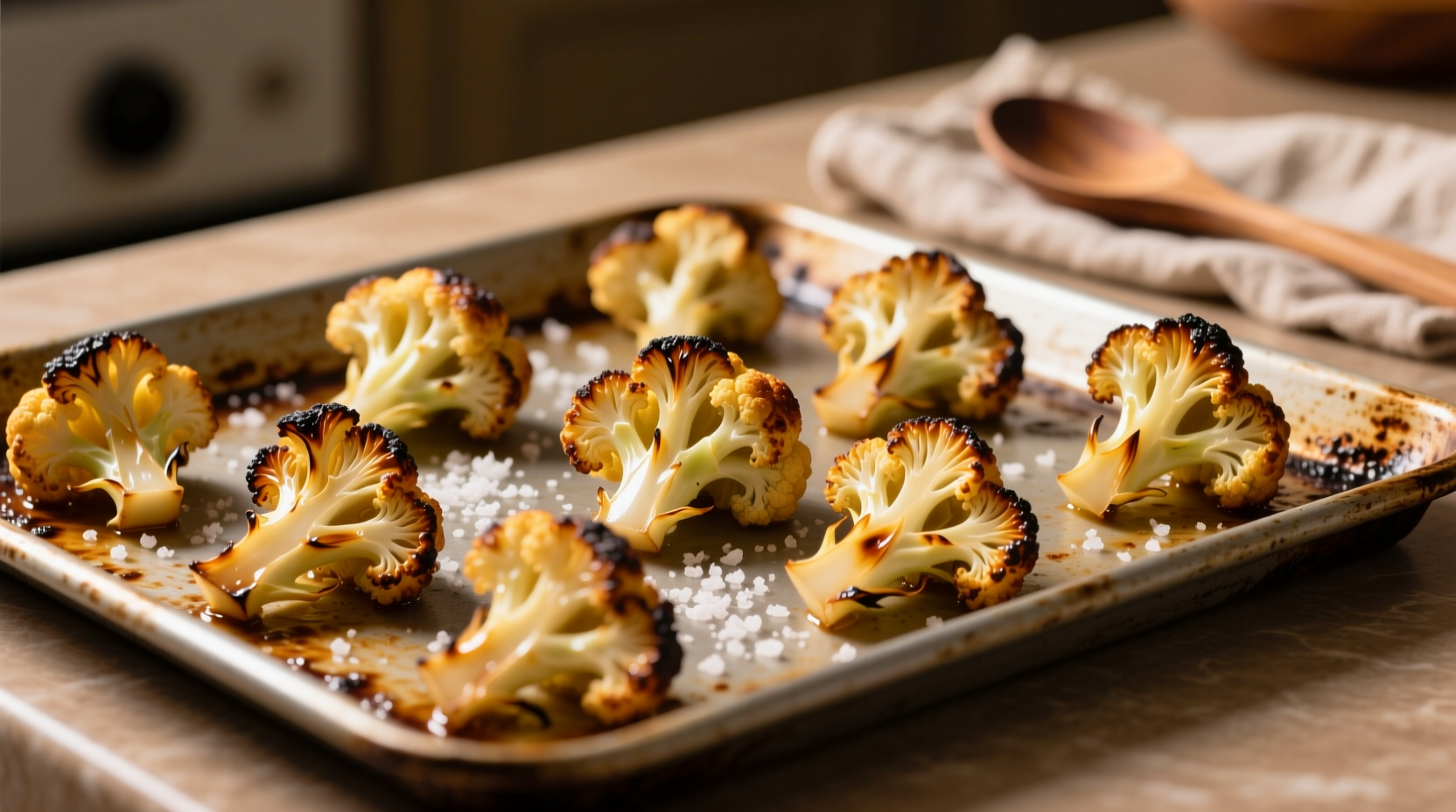Perfectly baked cauliflower features crispy edges, tender texture, and rich flavor—achieved by roasting at 425°F (220°C) for 25-30 minutes with proper oil coating and seasoning. This simple technique transforms humble cauliflower into a versatile side dish or main course that's both nutritious and delicious.
Nothing beats the satisfying crunch of perfectly roasted cauliflower florets with golden-brown edges and a tender interior. Whether you're looking for a healthy side dish, a meatless main course, or a low-carb alternative to traditional starches, baked cauliflower delivers exceptional flavor with minimal effort. In this guide, you'll learn the precise techniques professional chefs use to achieve consistently perfect results every time you roast cauliflower.
Why Baking Beats Boiling for Cauliflower
Unlike boiling which leaches nutrients and creates mushy texture, baking concentrates cauliflower's natural sugars through caramelization while preserving its nutritional value. The Maillard reaction—the chemical process that occurs when proteins and sugars are exposed to heat—creates complex flavor compounds that transform bland cauliflower into something extraordinary. According to the USDA Food Safety and Inspection Service, roasting vegetables at proper temperatures not only enhances flavor but also preserves more water-soluble vitamins compared to boiling methods.
Essential Tools for Perfect Baked Cauliflower
Before you start, gather these kitchen essentials that make the difference between soggy and spectacular:
- Heavy-duty rimmed baking sheet (prevents oil pooling)
- Parchment paper or silicone mat (for easy cleanup)
- Large mixing bowl (for proper oil distribution)
- Microplane grater (for fresh garlic and citrus zest)
- Instant-read thermometer (to verify doneness)
| Tool | Why It Matters | Pro Tip |
|---|---|---|
| Rimmed baking sheet | Prevents oil runoff and ensures even browning | Preheat sheet in oven for extra-crispy results |
| Parchment paper | Prevents sticking without excess oil | Crumple and flatten to create non-slip surface |
| Instant-read thermometer | Verifies internal temperature for perfect tenderness | Target 185-195°F (85-90°C) for ideal texture |
Selecting and Preparing Your Cauliflower
Start with a fresh, high-quality head of cauliflower. Look for compact, creamy-white florets with minimal browning and bright green leaves. The FDA recommends choosing firm heads that feel heavy for their size, indicating proper hydration and freshness. Avoid cauliflower with dark spots or loose curds, which indicate age and potential texture issues.
Preparation steps that make all the difference:
- Trim properly: Cut through the core vertically, then separate into uniform 1.5-inch florets (smaller pieces burn, larger ones cook unevenly)
- Dry thoroughly: Pat florets completely dry with clean kitchen towels—moisture is the enemy of crispiness
- Oil application: Toss with 1½ tablespoons high-smoke-point oil (avocado or grapeseed) per pound of cauliflower—enough to coat but not pool
- Seasoning timing: Add salt after oil application to prevent drawing out moisture

The Perfect Baking Technique: Step by Step
Follow these professional techniques for foolproof results:
Step 1: Oven Preparation
Preheat your oven to 425°F (220°C) with rack positioned in the upper third. This higher heat creates the ideal environment for caramelization while preventing sogginess. According to culinary research from the Culinary Institute of America, the upper oven position exposes cauliflower to more radiant heat from the top element, accelerating browning without overcooking the interior.
Step 2: Arrangement Matters
Spread florets in a single layer with cut sides down and space between pieces. Overcrowding creates steam that prevents proper browning—use two baking sheets if necessary. The University of Illinois Extension confirms that proper spacing allows hot air circulation, which is critical for achieving the Maillard reaction that creates complex flavors.
Step 3: The Flip Technique
After 15 minutes of baking, rotate the pan front-to-back for even cooking, then flip each floret to expose fresh surfaces. This two-sided roasting technique ensures maximum caramelization on all surfaces while maintaining structural integrity.
Step 4: Final Crisp Check
During the last 5 minutes, watch closely for the perfect golden-brown color. Remove when edges are deeply caramelized but centers remain tender when pierced with a fork. Overbaking leads to dry, bitter results—timing varies based on oven accuracy and floret size.
Avoid These Common Baking Mistakes
Even experienced cooks make these critical errors that compromise results:
- Using too much oil: Creates greasy, steamed rather than roasted cauliflower
- Adding wet ingredients too early: Lemon juice or vinegar should be added after baking to prevent sogginess
- Underseasoning: Cauliflower needs generous seasoning—1 teaspoon kosher salt per pound minimum
- Opening the oven too often: Each opening drops temperature significantly, extending cooking time
Variations to Elevate Your Baked Cauliflower
Once you've mastered the basic technique, experiment with these chef-approved variations:
Crispy Parmesan Cauliflower
Toss hot cauliflower with ¼ cup grated Parmesan immediately after baking—the residual heat melts the cheese into a crispy coating. For extra crunch, mix 2 tablespoons panko breadcrumbs with the Parmesan before adding.
Spiced Curry Roast
Combine 1 teaspoon curry powder, ½ teaspoon turmeric, and ¼ teaspoon cayenne with the oil before tossing. Finish with a squeeze of lime and fresh cilantro after baking for an aromatic twist.
Buffalo Cauliflower Bites
Toss baked cauliflower in 3 tablespoons buffalo sauce mixed with 1 tablespoon melted butter. Return to oven for 5 minutes to set the sauce, then serve with ranch or blue cheese dressing.
Serving and Storage Guidelines
For best texture, serve immediately after baking when crispness peaks. If you must store leftovers, follow these science-backed methods:
- Refrigeration: Store in airtight container with paper towel to absorb moisture (lasts 3-4 days)
- Reheating: Revive crispness by reheating in 400°F oven for 8-10 minutes (microwaving creates sogginess)
- Freezing: Not recommended—cauliflower becomes watery when thawed due to high water content
Nutritionally, baked cauliflower provides significant benefits. According to USDA FoodData Central, one cup of roasted cauliflower contains just 28 calories while delivering 77% of your daily vitamin C needs, 20% of vitamin K, and 10% of fiber requirements—making it an exceptional nutrient-dense choice.











 浙公网安备
33010002000092号
浙公网安备
33010002000092号 浙B2-20120091-4
浙B2-20120091-4